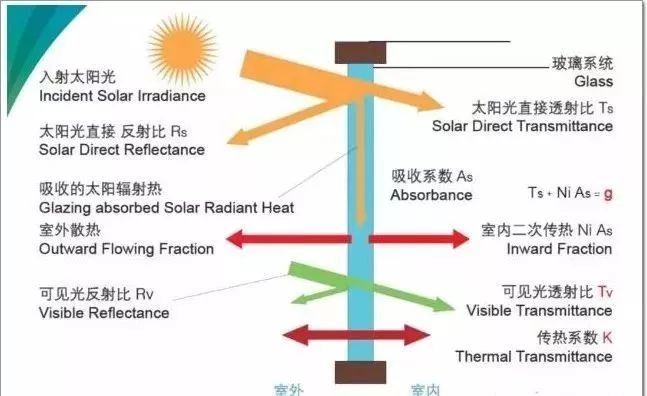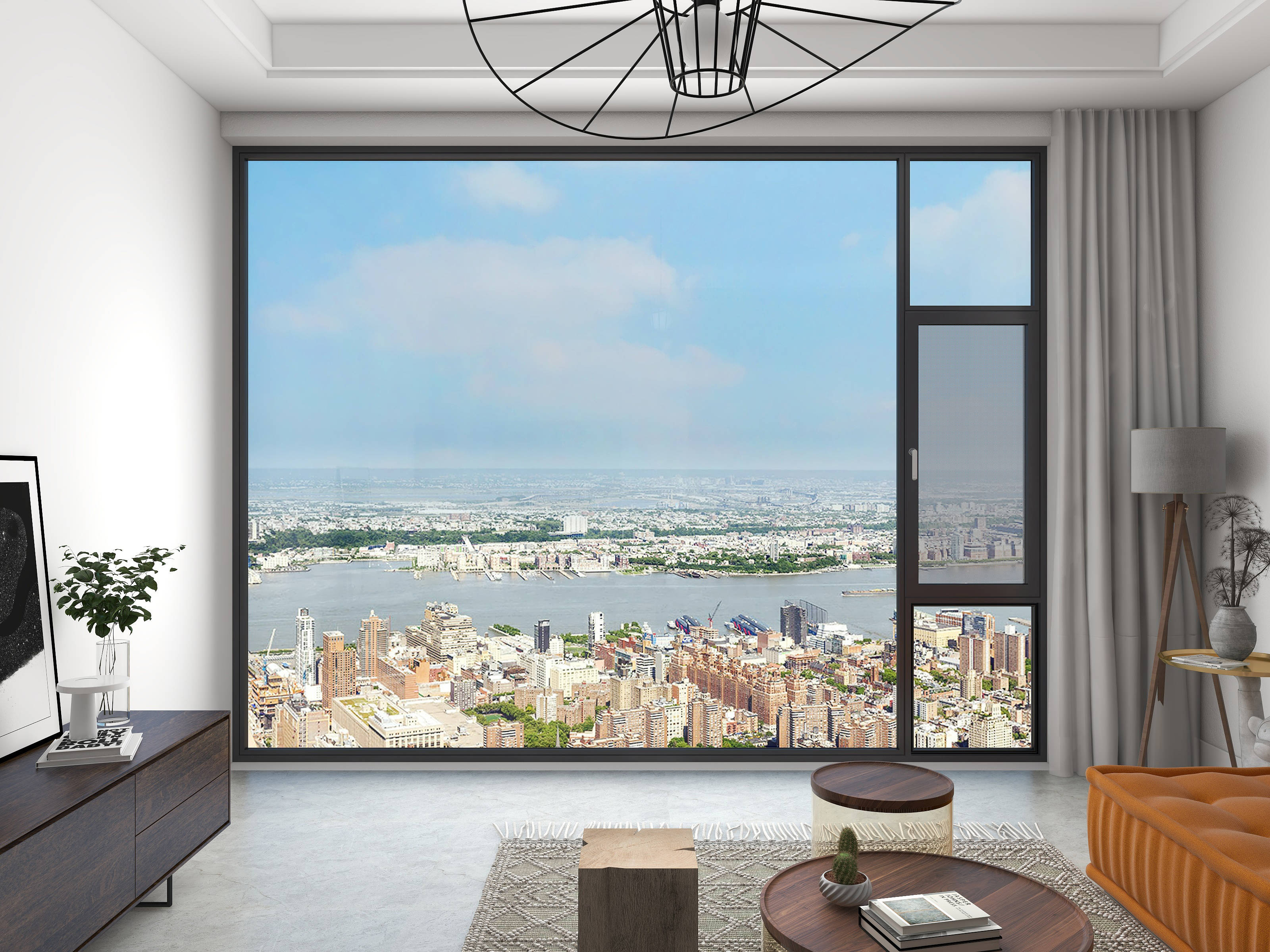The heat preservation and heat insulation performance becomes the focus, with the improvement of people’s energy conservation awareness. To improve the heat preservation and heat insulation performance, first we need to know how the construction glass transfer heat.
Normally there are two ways to transfer the heat through glass, first is the heat transfer based on temperature difference, second is the heat transfer based on solar radiation. So the technical methods to improve the glass performance is different based on the different heat transfer ways. The heat transfer based on temperature difference can be controlled by lowering the heat transfer coefficient-K value or U value. The heat transfer based on solar radiation can be controlled by adjusting solar transmittance and total transmittance of infrared thermal energy. Followed is the basic schematic chart for the heat transfer.
 To lower the heat transfer coefficient, need to reduce the heat radiation, convective heat transfer and heat conduction. The normally ways is to use low e glass to replace annealed glass, to fill in the inert gas, to add the quantity of air space or add the thickness of air space, or use vacuum glass to replace single glass plate.
To lower the heat transfer coefficient, need to reduce the heat radiation, convective heat transfer and heat conduction. The normally ways is to use low e glass to replace annealed glass, to fill in the inert gas, to add the quantity of air space or add the thickness of air space, or use vacuum glass to replace single glass plate.
As one kind of inert gas, the argon gas is featured by the high molecular weight, higher thermal insulation than air, rich in the natural and easy to produce. The density and dynamic viscosity of argon gas is higher than air, but its coefficient of heat conductivity and specific heat capacity is lower than air. When the argon gas is filled into the air space of the insulated glass, could slow down the heat convection and heat conduction in the insulated glass, the capacity of heat-transmission of insulated glass could be reduced, then the heat transfer coefficient-K value or U value can be lowered.
According the test data, no matter how thick is the air space, the K value will be lowered after filling in the argon gas. The reduced range is larger with thinner air space, it is around 0.3W/(㎡·K). When the air space thickness is larger than 12mm, the reduced range will be small, it is around 0.2W/(㎡·K). But the shading coefficient and relative heat gain won’t change much after the argon gas filled. So the insulated glass with argon gas have lower K value or U value, this is the major effect of the argon gas in the insulated glass.
On the other hand, the argon gas in insulated glass could protect the low e film well, to extend the life span of the insulated glass. And the sound-proof performance of insulated glass with argon gas is better.
Post time: Sep-08-2022

